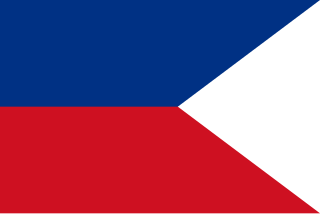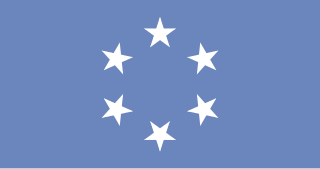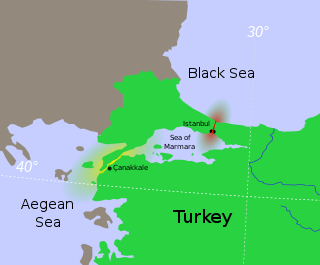 W
WThe presidency of Harry S. Truman began on April 12, 1945, when Harry S. Truman became President of the United States upon the death of Franklin D. Roosevelt, and ended on January 20, 1953. He had been Vice President of the United States for only 82 days when he succeeded to the presidency. A Democrat from Missouri, he ran for and won a full four–year term in the 1948 election. Although exempted from the newly-ratified Twenty-second Amendment, Truman did not run again in the 1952 election and was succeeded in office by Republican Dwight D. Eisenhower.
 W
WThe 1948 United States presidential election was the 41st quadrennial presidential election. It was held on Tuesday, November 2, 1948. In one of the greatest election upsets in American history, incumbent President Harry S. Truman, the Democratic nominee, defeated Republican Governor Thomas E. Dewey.
 W
WThe 1952 steel strike was a strike by the United Steelworkers of America against U.S. Steel and nine other steelmakers. The strike was scheduled to begin on April 9, 1952, but US President Harry Truman nationalized the American steel industry hours before the workers walked out. The steel companies sued to regain control of their facilities. On June 2, 1952, in a landmark decision, the US Supreme Court ruled in Youngstown Sheet & Tube Co. v. Sawyer, 343 U.S. 579 (1952), that the President lacked the authority to seize the steel mills.
 W
WThe Anglo-American Loan Agreement was a post–World War II loan made to the United Kingdom by the United States on 15 July 1946, enabling its battered economy to keep afloat. The loan was negotiated by British economist John Maynard Keynes and American diplomat William L. Clayton. Problems arose on the American side, with many in Congress reluctant, and with sharp differences between the treasury and state departments. The loan was for $3.75 billion at a low 2% interest rate; Canada loaned an additional US$1.19 billion. The British economy in 1947 was hurt by a provision that called for convertibility into dollars of the wartime sterling balances the British had borrowed from India and others, but by 1948 Marshall Plan money was flowing that did not have to be repaid. The entire loan was paid off in 2006, after it was extended six years.
 W
WBuck passing, or passing the buck, or sometimes (playing) the blame game, is the act of attributing to another person or group one's own responsibility. It is often used to refer to a strategy in power politics whereby a state tries to get another state to deter or fight an aggressor state while it remains on the sidelines.
 W
WContainment is a geopolitical strategic foreign policy pursued by the United States. It is loosely related to the term cordon sanitaire which was later used to describe the geopolitical containment of the Soviet Union in the 1940s. The strategy of "containment" is best known as a Cold War foreign policy of the United States and its allies to prevent the spread of communism after the end of World War II.
 W
WThe Federal Employees' Compensation Act (FECA), is a United States federal law, enacted on September 7, 1916. Sponsored by Sen. John W. Kern (D) of Indiana and Rep. Daniel J. McGillicuddy (D) of Maine, it established compensation to federal civil service employees for wages lost due to job-related injuries. This act became the precedent for "disability insurance" across the country and the precursor to broad-coverage health insurance.
 W
WThe foreign policy of the Harry S. Truman administration was the foreign policy of the United States from April 12, 1945 to January 20, 1953, when Harry S. Truman served as the President of the United States. The Truman administration's foreign policy primarily addressed the end of World War II, the aftermath of that war, and the beginning of the Cold War. Truman's presidency was a turning point in foreign affairs, as the United States engaged in an internationalist foreign policy and renounced isolationism.
 W
WThe first inauguration of Harry S. Truman as the 33rd President of the United States was held at 7:00 pm on Thursday, April 12, 1945, at the Cabinet Room inside the White House in Washington, D.C., following the death of President Franklin D. Roosevelt earlier that day. The inauguration—the seventh non-scheduled, extraordinary inauguration to ever take place—marked the commencement of the first term of Harry S. Truman as president.
 W
WThe second inauguration of Harry S. Truman as President of the United States was held on Thursday, January 20, 1949, at the East Portico of the United States Capitol in Washington, D.C. This was the 41st inauguration and marked the commencement of the second and only full term of Harry S. Truman as President as well as the only term of Alben W. Barkley as Vice President. Chief Justice Fred M. Vinson administered the presidential oath of office while Justice Stanley Forman Reed administered vice-presidential oath of office.
 W
WOn 11 April 1951, U.S. President Harry S. Truman relieved General of the Army Douglas MacArthur of his commands after MacArthur made public statements which contradicted the administration's policies. MacArthur was a popular hero of World War II who was then commander of United Nations Command forces fighting in the Korean War, and his relief remains a controversial topic in the field of civil–military relations.
 W
WThe Marshall Plan was an American initiative passed in 1948 for foreign aid to Western Europe. The United States transferred over $12 billion in economic recovery programs to Western European economies after the end of World War II. Replacing an earlier proposal for a Morgenthau Plan, it operated for four years beginning on April 3, 1948. The goals of the United States were to rebuild war-torn regions, remove trade barriers, modernize industry, improve European prosperity, and prevent the spread of communism. The Marshall Plan required a reduction of interstate barriers, a dropping of many regulations, and encouraged an increase in productivity, as well as the adoption of modern business procedures.
 W
WThe Allied occupation of Japan at the end of World War II was led by the United States, whose then-President Harry S. Truman appointed General Douglas MacArthur as the Supreme Commander for the Allied Powers, with support from the British Commonwealth. Unlike in the occupation of Germany, the Soviet Union was allowed little to no influence over Japan. This foreign presence marks the only time in Japan's history that it has been occupied by a foreign power. At MacArthur's insistence, Emperor Hirohito remained on the imperial throne. The wartime cabinet was replaced with a cabinet acceptable to the Allies and committed to implementing the terms of the Potsdam Declaration, which among other things called for the country to become a parliamentary democracy. Under MacArthur's guidance, the Japanese government introduced sweeping social reforms and implemented economic reforms that recalled American "New Deal" priorities of the 1930s under President Roosevelt. The Japanese constitution was comprehensively overhauled and the Emperor's theoretically-vast powers, which for many centuries had been constrained by conventions that had evolved over time, became strictly limited by law. The occupation, codenamed Operation Blacklist, was ended by the San Francisco Peace Treaty, signed on September 8, 1951, and effective from April 28, 1952, after which Japan's sovereignty – with the exception, until 1972, of the Ryukyu Islands – was fully restored.
 W
WThe Point Four Program was a technical assistance program for "developing countries" announced by United States President Harry S. Truman in his inaugural address on January 20, 1949. It took its name from the fact that it was the fourth foreign policy objective mentioned in the speech.
 W
WIn the United States the Recession of 1953 began in the second quarter of 1953 and lasted until the first quarter of 1954. The total recession cost roughly $56 billion. It has been described by James L. Sundquist, a staff member of the Bureau of the Budget and speech-writer for President Harry S. Truman as "relatively mild and brief."
 W
WThe "Revolt of the Admirals" was a policy and funding dispute within the United States government during the Cold War in 1949, involving a number of retired and active-duty United States Navy admirals. These included serving officers Admiral Louis E. Denfeld, Chief of Naval Operations, and Vice Admiral Gerald F. Bogan, as well as Fleet Admirals Chester Nimitz and William Halsey, senior officers in World War II.
 W
WThe Treaty of Manila of 1946, formally the Treaty of General Relations and Protocol, is a treaty of general relations signed on July 4, 1946 in Manila, the capital of the Philippines. It relinquished U.S. sovereignty over the Philippines and recognized the independence of the Republic of the Philippines. The treaty was signed by High Commissioner Paul V. McNutt as representative of the United States and President Manuel Roxas as representative of the Philippines.
 W
WThe Truman Doctrine was an American foreign policy whose stated purpose was to contain Soviet geopolitical expansion during the Cold War. It was announced to Congress by President Harry S. Truman on March 12, 1947, and further developed on July 4, 1948, when he pledged to contain the communist uprisings in Greece and Turkey. Direct American military force was usually not involved, but Congress appropriated financial aid to support the economies and militaries of Greece and Turkey. More generally, the Truman Doctrine implied American support for other nations thought to be threatened by Soviet communism. The Truman Doctrine became the foundation of American foreign policy, and led, in 1949, to the formation of NATO, a military alliance that still exists. Historians often use Truman's speech to date the start of the Cold War.
 W
WHarry S. Truman was the 33rd president of the United States from 1945 to 1953, succeeding upon the death of Franklin D. Roosevelt after serving as the 34th vice president. He implemented the Marshall Plan to rebuild the economy of Western Europe, and established the Truman Doctrine and NATO.
 W
WThe Trust Territory of the Pacific Islands (TTPI) was a United Nations trust territory in Micronesia administered by the United States from 1947 to 1994.
 W
WThe Turkish Straits crisis was a Cold War-era territorial conflict between the Soviet Union and Turkey. Turkey had remained officially neutral throughout most of the Second World War. When the war ended, Turkey was pressured by the Soviet government to allow Soviet shipping to flow freely through the Turkish Straits, which connected the Black Sea to the Mediterranean. As the Turkish government refused the Soviet Union's request, tensions arose in the region, leading to a Soviet show of naval force. The incident would later serve as a deciding factor in the issuing of the Truman Doctrine. At its climax, the tensions would cause Turkey to turn to the United States for protection through NATO membership.
 W
WOn October 15, 1950, U.S. President Harry S. Truman and General Douglas MacArthur met on Wake Island to confer about the progress of the Korean War. Truman decided he would meet MacArthur at Wake Island, "so that General MacArthur would not have to be away from the troops in the field for long."